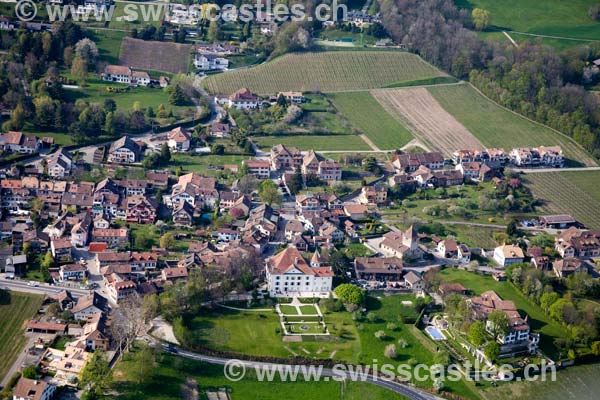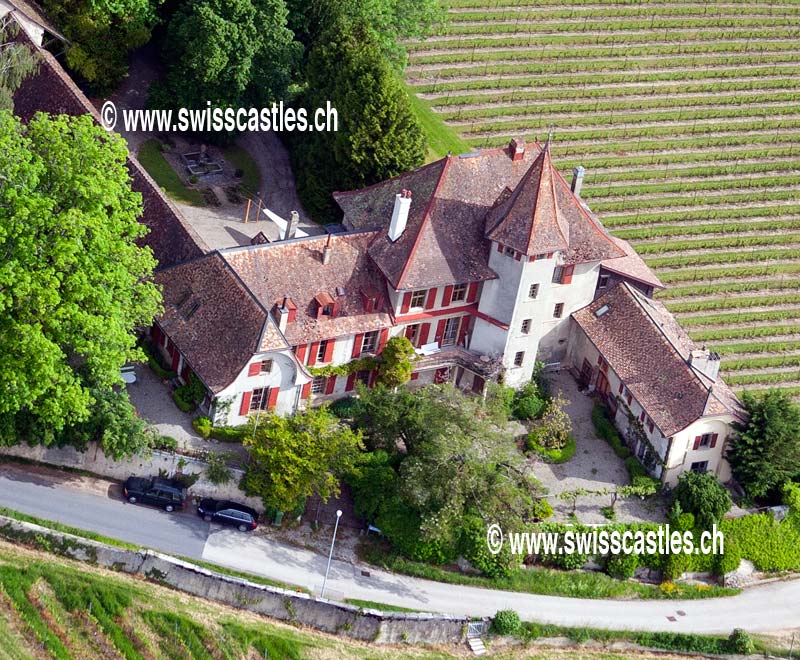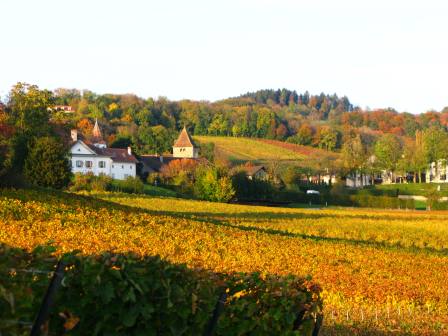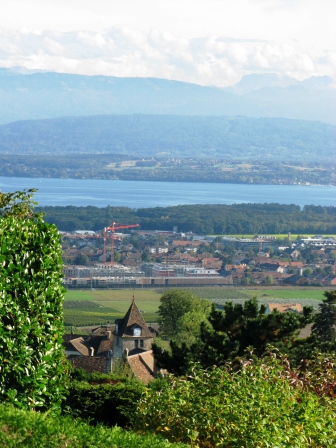Begnins
Begnins is a municipality in the district of Nyon in the canton of Vaud in Switzerland.
Geography
Begnins is located on 541 m above sea level. Level, 6 km north of the district main town Nyon ( straight line ). The village is located on a terrace at the foot of the Jura, to the east of the valley of the serines, in a scenic location around 170 m above the lake level of Lake Geneva.
The area of 4.8 km ² large municipality area includes a portion of the Vaud Cote. The communal land extends from the foot of the Jura to the north over the vineyards of the Côte and the terrace of Begnins up to the Jura upstream height of western Côte, on 720 m above sea level. M. the highest point of the municipality is reached. The western boundary of the municipality always forms the serines, which has carved over millions of years, a deep valley to the heights of the Jura foothills. From the municipality surface 1997 14 % came from settlements, 18% of forest and woody plants and 68 % to agriculture.
To Begnins include some isolated farms and wineries. Neighboring communities of Begnins are Vich, Gland, Luins, Burtigny, Le Vaud and basins.
Population
With 1607 inhabitants ( 31 December 2012) Begnins belongs to the medium-sized municipalities in the canton of Vaud. Of the 81.4% inhabitants are French-speaking, German-speaking 7.1 % and 4.6 % in English (as of 2000). The population of Begnins amounted in 1850 to 734 residents in 1900 to 782 inhabitants. After 1960 (766 inhabitants) established a rapid population increase.
Economy
Begnins was until the mid 20th century embossed mainly by agriculture village. The optimally to the south exposed slopes are ideal for growing grapes that still plays a major role as a source of income of the population. There are also farming. More jobs are in small local manufacturing and services available. In the 18th and 19th centuries Begnins was an important trading place on the foot of the Jura with year markets for agricultural products. In recent decades, Begnins has developed thanks to its attractive location into a residential community. Many workers are commuters who work primarily in Nyon and Geneva.
Traffic
The community is easily accessible via. It is located on the main street of England to Saint- CERGUE, the motorway connecting England to the A1 is just 2 km from the village. Due to the postal bus lines that run from Nyon to Gimel and from England to Burtigny, Begnins is connected to the public transport network. From 1906 to 1954, the interurban tram Gland - Begnins wrong ( GB).
History
The territory of Begnins was settled very early, which is ( with rich grave goods ) from the La Tène period and a Roman milestone of about 250 evidenced by the discovery of a burial ground after Christ. The first written mention of the village was carried out in 1145 under the name Bingins. Later, other spellings appeared: Binnins ( 1204) and Bîgnins ( 1226 ). The place name probably goes back to the Burgundian personal name Bino and means for the people of the Bino.
Since the first mention of the nobles of Begnins are attested, the vassals of the lords of Prangins were. 1293 Begnins came to the Counts of Savoy. With the conquest of Vaud by Bern in 1536, the village came under the administration of the bailiwick of Nyon. The former municipality Serraux that exists today only a few houses, merged in 1767 with Begnins. After the collapse of the ancien régime, the village belonged from 1798 to 1803 during the Helvetic Republic to the canton of Geneva, who came up then with the enactment of the Act of Mediation in the canton of Vaud.
Attractions
The parish church of Notre -Dame, founded in the 11th century, was later rebuilt several times. The single nave has a choir with a ribbed vault and a tower, which was used in former times as a defensive tower. From the 14th and 15th century, the three chapels date on the south side of the nave.
The Château du Martheray was formerly the seat of the noble family of Begnins. Originating from the 16th century building was transformed in the 19th century, the hexagonal stair tower from 1671 is preserved. The standing on the eastern edge of the village of Château de Cottens is a medieval building, which was remodeled in the 17th century. Also, the Château de Menthon or de Rochefort is a late medieval seat of power, alterations were made in the 16th and 18th centuries. In the center several citizens and wine houses are from the 17th to 19th centuries.










